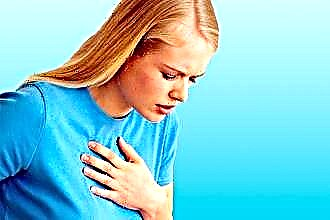What is cardiac arrest?
Cardiac arrest is a rapid and complete cessation of the pumping function of the myocardium, as a result of which cardiac activity becomes completely ineffective. This leads to impaired blood circulation in all tissues and organs and to the development of clinical death. At the same time, on the ECG, bioelectric activity is either completely absent, or present, but incorrect.
Clinical death (a form in which revival is possible) lasts 3-5 minutes (in the cold season up to 30 minutes), after which irreversible processes occur in the brain - the so-called biological death.
What can lead to a sudden cessation of the heart?
Usually, the stop of the myocardium occurs due to pathologies of the cardiovascular system (the so-called cardiogenic causes). But often other acute or chronic diseases, as well as injuries and accidents (non-cardiogenic), become a triggering factor.
| Cardiogenic causes | Noncardiogenic causes |
|---|---|
| Myocardial infarction | Stroke |
| Acute and chronic heart failure | Cardiac surgery (stenting, valve replacement) |
| Defects of the structures of the heart | Oncological diseases |
| Cardiomyopathies | Infectious pathologies |
| Myocarditis | Complications of bronchopulmonary diseases (respiratory failure, respiratory distress syndrome) |
| Hypertensive crisis | Endocrine disorders (diabetic, hypothyroid, thyrotoxic coma) |
| Heart rhythm disorders | Acute hypercalcemia and / or hypokalemia |
| Cardiogenic shock | Sepsis |
| Pulmonary embolism | Pancreatic shock |
| Aortic aneurysm | Acute renal and / or hepatic failure |
| Heart tamponade |
Separately occurring episodes that can cause cardiac arrest include:
- Anaphylactic shock (due to anesthesia, local anesthesia, antibiotics and other drugs, insect bites);
- Poisoning (including alcohol and drugs);
- Massive burns;
- Hypo- and hyperthermia;
- Electrical trauma;
- Suffocation.
Causes in children and young people
Most often, older people die from the cessation of the work of the heart. However, there are reasons that can cause it in children or young men. They are usually caused by the above conditions associated with trauma and other injuries, as well as serious arrhythmias. But there are also some specific pathologies.
So, before the age of one year, sudden infant death syndrome may occur. In such a case, a violation of the heartbeat and breathing develops against the background of absolute external well-being, most often at night and during sleep.
Risk factors for sudden infant death may include:
- sleeping on a too soft bed in an unventilated room on the stomach - while the baby may simply suffocate;
- multiple pregnancy;
- prematurity;
- delivery by cesarean section;
- bad habits of the mother during pregnancy.
During pregnancy, for one reason or another, fetal cardiac arrest may occur. Most often this happens due to undiagnosed intrauterine abnormalities in the development of the embryo, genetic pathologies.
Athletes often experience lightning death due to Commotio Cortis syndrome. It occurs as a result of a sharp and strong blow to the heart area at the time of diastole. Such an action can cause the reflex development of dangerous arrhythmias, for example, ventricular fibrillation.
Threatening sports in this regard are:
- martial arts;
- baseball;
- American football;
- hockey.
Symptoms and signs of the condition
In fact, in medicine, short-term cardiac arrest is considered the equivalent of clinical death. So the symptoms of these conditions are almost the same:
- complete loss of consciousness. The person does not respond to sound and pain stimuli;
- after a very short time after stopping, short convulsions may appear;
- breathing is either completely absent, or very rare and intermittent.
- the skin is very pale and covered with sweat, however, on the tips of the fingers, nose, on the lips, it becomes cyanotic (bluish);
- the pulse is absent both on the peripheral (on the wrist) and on the main arteries (carotid, on the neck).
- it is also impossible to feel the impulse to the left of the sternum;
- the pupils do not respond (do not narrow) when light is directed at them;
- an expression of fear on his face.
Above is the extended symptomatology of clinical death. However, the European Association of Resuscitators recommends for persons without medical education to limit themselves only to checking the patient's consciousness and breathing.
This limitation is due to the fact that there is very little time, and in extreme situations, an ordinary person is able to get confused, frightened and not complete all resuscitation and diagnostic procedures. In addition, during the check of heart activity, the so-called "false pulse syndrome" occurs - due to the release of adrenaline, a person can feel his own pulse on the deceased.
First of all, the patient needs to check consciousness:
- call out loudly to the victim (preferably in the ear).
- if it doesn't respond, apply a pain stimulus. For example, pinch firmly on the top edge of the trapezius muscle.
- if he does not react in any way, it means that there is no consciousness, proceed to the breathing test.
Respiration is assessed as follows:
- Tilt the victim's head back to clear the airway and open your mouth.
- If there are foreign bodies in your mouth, remove them - they may be obstructing breathing.
- Bend over the victim and listen for 10 seconds. In this case, you will feel the movement of air in your cheek and observe the rise of the chest. For 10 s, there should be at least 2-3 breaths.
- If breathing is absent or is recorded in the number of less than 2 breaths, it can be assumed that cardiac arrest has occurred and this is an indication for CPR.
What types of stops exist and how do they differ from each other?
What we see in films in the form of a straight line is not the only option for stopping the myocardium. Often, electrical activity is observed, but there is no normal blood circulation.
The types of cardiac arrest are as follows:
- ventricular fibrillation - the so-called chaotic, random contractions of individual myocytes. As a result, the heart flutters, as it were, but the pumping function is lost. In this case, electrical defibrillation is effective.
- asystole - this type is characterized by a complete absence of contractions and electrical activity. A straight isoline is observed on the cardiogram.
- electromechanical dissociation - while separate QRS complexes are observed on the ECG, however, contractions do not occur, blood pressure is absent.
How to proceed and what to do first
The future fate of the patient largely depends on the quality and timeliness of first aid.
After you have determined the absence of cardiac activity, it is necessary to start resuscitation measures, which consist of external heart massage and mechanical ventilation:
Call an ambulance, or ask someone present to do it, and proceed to cardiopulmonary resuscitation;
- Find the point on the sternum, which is on the border of the lower and middle third;
- Place the base of the palms there;
- Start pressing with such force so that the chest goes down to a depth of 5-6 cm, observing a frequency of 100-120 clicks per minute (about two per 1 second);
- After 30 strokes, take two breaths into the victim's mouth, while keeping the nose closed
- Do not stop until an ambulance arrives, or signs of life appear, or you are unable to continue.
What are the consequences of the situation and how to prevent it
A patient who has experienced clinical death may develop various complications:
- neurological disorders;
- ischemic damage to other organs (kidneys, liver, gastrointestinal tract), which lead to their failure;
- visual impairment, hearing impairment;
- mental disorders.
In addition, the risk of repeated sudden death is significantly increased.
To prevent this condition, the following measures must be taken:
- carefully follow all medical prescriptions, do not miss taking medications;
- undergo scheduled examinations and examinations at least once every six months;
- avoid physical stress and psycho-emotional stress;
- quit smoking and drinking alcohol;
- eat right - avoid fatty foods, eat more vegetables and fruits, follow the food intake - at the same time, at least 4 times a day;
- engage in physiotherapy exercises and breathing exercises under the strict supervision of a physician.
Such measures significantly improve the prognosis and improve the patient's quality of life.
Conclusions
Cardiac arrest is a dangerous condition that leads to the development of clinical death, and occurs for many reasons, primarily due to cardiovascular disease.
Early recognition of the condition and effective first aid can reduce the likelihood of death and subsequent complications.



